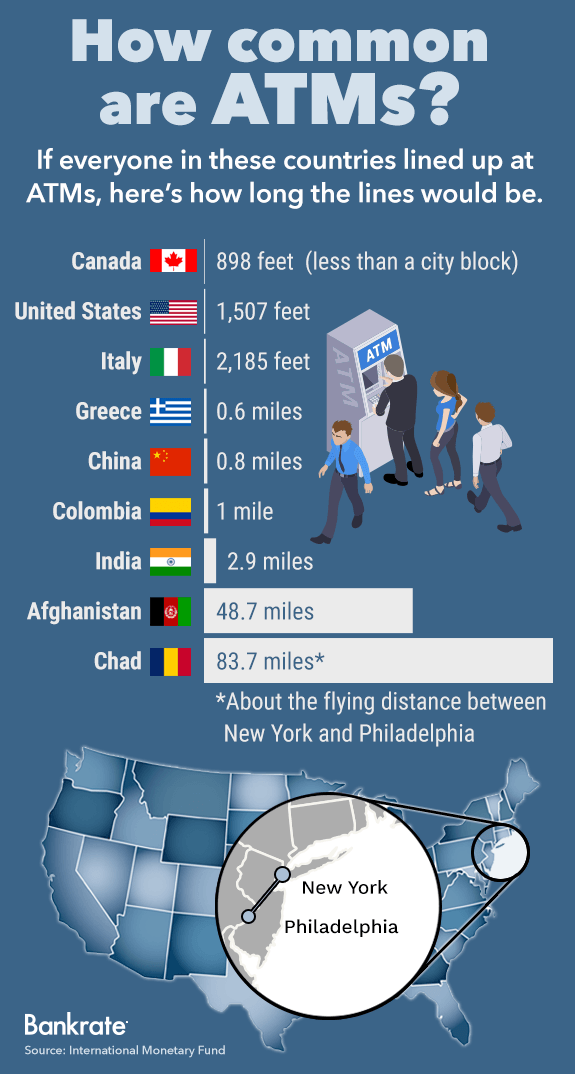ATMs are a crucial part of the way customers carry out a transaction. Even considering the mass global shift to online and mobile banking, and financial experts predicting a future cashless society, self service banking is still seen as an essential service.
The convenience and complexity of ATMs
An ATM transaction allows consumers to perform a quick self service transaction like cash withdrawal, cash or check deposit, bill payment, bank transfer and more.
But with massive advances in ATM hardware and software, an ATM today is somewhat more complex and multifaceted. An ATM network could deploy hardware and software from multiple vendors, and communicate with various services - thereby providing a more diverse range of transactions. This diversity and complexity highlights the utmost importance of management software and a performance monitoring system for optimal network performance.
Why financial institutions need ATM monitoring and management
Even though ATMs are still an important facet of global transaction services, the number of ATMs installed worldwide has been falling since 2018. According to RBR, the number is set to continue decreasing, making high quality of service at every terminal vital. When an ATM system is inaccessible or unavailable due to cash depletion or system updates, it quickly leads to customer frustration, dissatisfaction - and even into dispute resolution issues.
Enterprise-level ATM monitoring and management solutions enable banks and other financial institutions, as well as retailers and Managed Service Providers (MSPs) to proactively monitor and manage critical ATM network and payment infrastructures in real time.
Is your business coping under increasing demand from new and emerging technologies?
Customer experience vs ATM performance management criteria
Most ATM management solutions measure effectiveness primarily based on ATM availability. This is usually defined as the percentage of time ATMs are able to dispense cash. The monitoring criteria uses the number of minutes an ATM is down, but this metric doesn't factor in the value of specific time periods of high usage versus low usage.
With a rapidly growing emphasis on consumer experience, monitoring and management solutions need metrics that reveal detailed insights into how a consumer is affected by ATM failures.
According to a research study by Level Four, 28% of U.S. survey respondents stated that they would be very likely to switch banks if they experienced recurrent instances of ATM unavailability.
ATM monitoring criteria
Measuring user interactions will improve the efficiency and value of your ATM channel. Monitoring and management tools implement performance data to optimize services.
Availability tiers
Some banks and financial institutions use a tier system to report availability. This metric assumes that ATM availability is equally important at all times of the day. However, an ATM at a train station being available at a peak time of 5:00 pm is far more important than the same ATM being available at, say 3:00 pm.
Location
ATM management also needs to take into account the location of ATMs when measuring their value. Once an ATM is placed, monitoring and management of its performance over time is important. As establishments in the area change, foot and/or traffic patterns may change, affecting usage and profitability.

Failed transactions
While banks and financial institutions need to look at availability by time of day, peak transaction times and location - it's failed or incomplete transactions that they need to accurately monitor and manage. This raises the question of how many negative user experiences occurred at an ATM during the time that the ATM was out of service. Management solutions can produce data on how the failure impacted the brand, customer acquisition and retention.
Monitoring and management means increased customer loyalty
Accurately measuring failed ATM customer interaction is the most valuable monitoring insight and a vital tool for optimizing your ATM network. ATM monitoring therefore becomes a crucial solution for gauging customer loyalty, and as a revenue generation tool. It takes detailed collaboration between company resources and the vendors who support your ATM network, but with the right management software, you achieve a better customer experience and protect your bottom line.
What is real time ATM monitoring?
Real time monitoring and transaction analytics allows managers and tech teams to look deeper into network availability issues, security, fraud, and failed user interactions as they happen. It provides answers to why incidents occur, analyzes frequency of incidents, creates alerts, and resolves issues more quickly. And most importantly, monitoring and management tools reveal predictive and proactive solutions to prevent these problems in the future.
Key benefits of effective ATM monitoring software
Real time ATM monitoring and analysis reveals complete end to end visibility into ATM systems health status, cash and consumable levels. ATM monitoring will generate alerts, warnings and data analysis for proactive incident management. An ATM fleet can enable thousands of user interactions in a given moment. By detailed analysis of these interactions, banks can harvest powerful data to optimize performance.
Complete payments visibility
Banks face many challenges when monitoring payments in a high volume environment. Self service ATM transactions, store purchases, direct deposits, card payments, online purchases are just some of the payments interactions that can be subject to failure.






